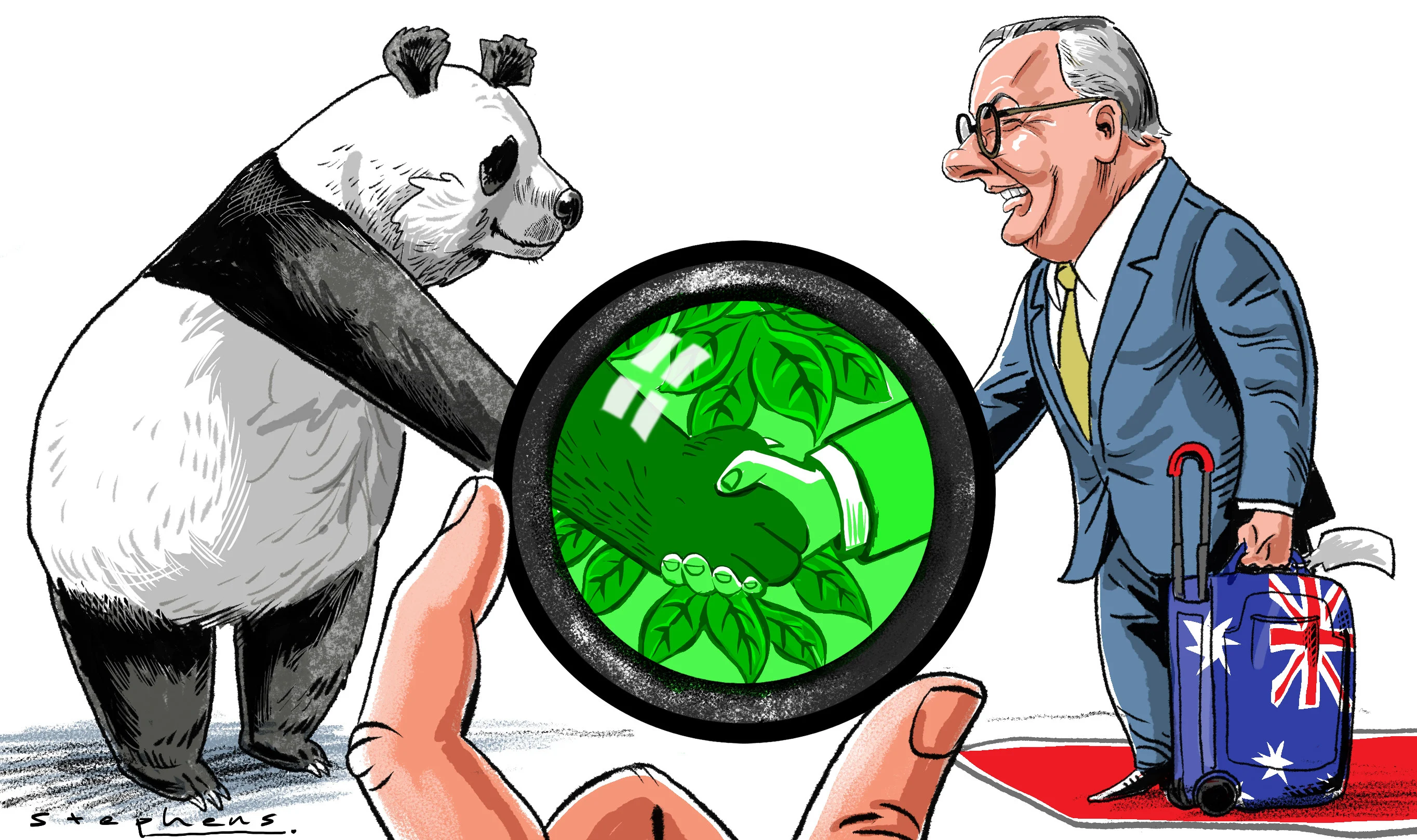By Genevieve Donnellon-May
Australian Prime Minister Anthony Albanese’s coming visit to China later this summer presents a timely chance to reframe Australia–China relations through an increasingly vital lens: climate cooperation. With bilateral ties having largely stabilised since 2022 and a joint Australia–Pacific bid for the 2026 UN climate summit under way, climate action offers a promising platform for stronger engagement.
The rationale for cooperation is clear. Australia possesses vast reserves of critical minerals and significant renewable energy potential. China is the global leader in clean energy technologies – from solar panels and electric vehicles (EVs) to wind turbines and battery storage. By May, China’s total installed solar photovoltaic (PV) capacity exceeded 1,000 gigawatts (GW) – nearly half the global total.
To meet its carbon-reduction targets, Australia needs technology and engineering resources from overseas, including China. Leveraging each country’s strengths through closer climate collaboration could accelerate industrial decarbonisation and clean energy deployment.
Two priority areas stand out. The first is securing resilient supply chains for critical minerals and clean energy components. Australia is a key global supplier of lithium, bauxite, cobalt, nickel and rare earths minerals that are essential to battery and EV production. China is a major importer of Australian raw minerals and also dominates downstream processing and manufacturing.
Building on existing frameworks, such as an updated Sino-Australian memorandum of understanding on climate cooperation, the two countries could undertake joint ventures, research and development in refining, battery production or rare earth processing. Doing so would boost domestic value-added industries in Australia and help meet China’s rising demand.
Such cooperation aligns with the Albanese government’s ambitious “Future Made in Australia” agenda, which aims to position Australia as a renewable energy superpower and advanced manufacturing hub. It could also support innovation and create job opportunities across Australia.
Lessons can be drawn from Europe. Against the backdrop of the European Union’s Green Deal Industrial Plan, which aims to enhance the competitiveness of Europe’s net-zero industry and accelerate the transition to climate neutrality, a handful of the bloc’s firms have signed partnerships with Chinese EV manufacturers to establish battery plants.
The second major area for stronger Sino-Australian cooperation is clean technology and innovation. Collaborative R&D in areas such as solar power, hydrogen and green ammonia in Australia could help drive down costs. Australian companies are well-positioned to send related exports to China’s expanding clean energy markets. Meanwhile, Chinese firms bring scale, capital and technical know-how.
However, Chinese investment in Australia remains disproportionately low. In 2024, it was just US$862 million – the third-lowest level in Australia in nearly 20 years and down from US$1.42 billion in 2022. This is despite China’s backing of more than 180 global green energy projects worth over US$140 billion since 2023.
Still, there is growing momentum. Bilateral business councils and chambers of commerce are engaged in green investment dialogues, as shown by the inaugural Australia–China Green Economy Forum earlier this year.
Major hurdles remain. Australia–China relations are shaped by interconnected concerns – geopolitical tensions, mistrust and domestic political pressures.
Central among these is Aukus – the trilateral security pact between Australia, the United States and Britain – widely seen as a Western response to China’s growing Indo-Pacific presence. Canberra regards it as critical to regional security. Estimated at A$268–368 billion (US$175.8–241.5 billion), it is one of Australia’s biggest defence investments.
However, critics – including former prime ministers Paul Keating and Malcolm Turnbull – warn that it risks eroding sovereignty and binds Australia too closely to an increasingly unpredictable ally. From Beijing’s perspective, Aukus signals Australia’s lack of foreign policy independence.
Australians are also questioning Washington’s increasingly transactional nature. In April, the US imposed sweeping “Liberation Day” tariffs, including a 10 per cent levy on all Australian exports – despite a long-standing free trade agreement.
These actions, alongside the White House’s withdrawals from international accords like the Paris Agreement, raise doubts about Washington’s reliability as an economic partner and a climate leader. In contrast, China’s sustained engagement in multilateral climate efforts and trade partnerships may increasingly position it as the more dependable partner.
Meanwhile, anti-China sentiment in Australia could impede engagement. Calls to decouple supply chains, often framed through national security concerns, risk undermining integrated clean energy value chains essential to decarbonisation.
Regional security incidents like Chinese naval activity near Australian waters and live-fire drills in the Tasman Sea – conducted with warning but lacking in transparency – further exacerbate matters. These developments deepen mistrust and heighten political sensitivities around climate cooperation, even as mutual interests align.
Seeing China solely through a security lens undoubtedly distorts national interests by undermining Australia’s capacity to engage. Instead, Canberra must frame climate collaboration with Beijing as a technical and apolitical endeavour – one that shows Sino-Australian climate collaboration is a pragmatic response to shared challenges and that is compatible with Australian sovereignty and national security.
Economic nationalism and regulatory fragmentation further hinder bilateral cooperation. Australia’s tightening of foreign investment rules, particularly in sensitive sectors like critical minerals and energy infrastructure, has delayed or blocked some Chinese-linked acquisitions. Last year, Australia’s treasurer ordered investors with ties to China to divest their shares in an Australian rare earth mining project, after the country’s Foreign Investment Review Board advised it was against Australia’s national interest.
Canberra should clarify its investment framework to reduce uncertainty. Doing so could help Australia better align foreign investment with industrial policy objectives.
With shared climate goals and complementary strengths, the case for Sino-Australian cooperation is strong. But seizing this opportunity means Canberra must be willing to work more pragmatically with Beijing.
